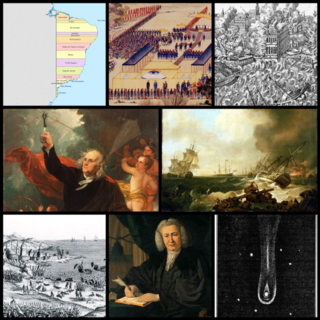Top Qs
Timeline
Chat
Perspective
1750s
Decade From Wikipedia, the free encyclopedia
Remove ads
The 1750s (pronounced "seventeen-fifties") was a decade of the Gregorian calendar that began on January 1, 1750, and ended on December 31, 1759. The 1750s was a pioneering decade. Waves of settlers flooded the New World (specifically the Americas) in hopes of re-establishing life away from European control, and electricity was a field of novelty that had yet to be merged with the studies of chemistry and engineering. Numerous discoveries of the 1750s forged the basis for contemporary scientific consensus. The decade saw the end of the Baroque period.

Remove ads
1750
January–March
- January 13 – The Treaty of Madrid between Spain and Portugal authorizes a larger Brazil than had the Treaty of Tordesillas of 1494, which originally established the boundaries of the Portuguese and Spanish territories in South America.
- January 24 – A fire in Istanbul destroys 10,000 homes.[1]
- February 15 – After Spain and Portugal agree that the Uruguay River will be the boundary line between the two kingdoms' territory in South America, the Spanish Governor orders the Jesuits to vacate seven Indian missions along the river (San Angel, San Nicolas, San Luis, San Lorenzo, San Miguel, San Juan and San Borja).[2]
- March 5 – The Murray-Kean Company, a troupe of actors from Philadelphia, gives the first performance of a play announced in advance in a newspaper, presenting Richard III at New York City's Nassau Street Theatre.[3]
- March 20 – The first number of Samuel Johnson's The Rambler appears.
April–June
- April 7 – Maveeran Alagumuthu Kone, a polygar in Tamil Nadu, raises slogans and launches a rebellion against Company rule in India due to his opposition to the East India Company's tax collection policies.
- April 13 – Dr. Thomas Walker and five other men (Ambrose Powell, Colby Chew, William Tomlinson, Henry Lawless and John Hughes) cross through the Cumberland Gap, a mountain pass through the Appalachian Mountains, to become the first white people to venture into territories that had been inhabited exclusively by various Native American tribes.[4] On April 17, Walker's party continues through what is now Kentucky and locates the Cumberland River, which Walker names in honor of Prince William, Duke of Cumberland.
- April 14
- A group of enslaved West African, bound for the Americas, successfully overpowers the crew of the British slaver ship Snow Ann, imprisons the survivors, and then navigates the vessel back to Cape Lopez in Gabon.[5] Upon regaining their freedom, the rebels leave the survivors on the Gabonese coast.
- The Viceroy of New Spain, Juan Francisco de Güemes, issues a notice to the missionaries in Nuevo Santander (which includes parts of what are now the U.S. state of Texas, including San Antonio, and the Mexican state of Tamaulipas) to work peacefully to convert the indigenous Karankawa people to Roman Catholicism.[6]
- April 25 – The Acadian settlement in Beaubassin, Nova Scotia, is burnt by the French army, and the population is forcibly relocated, after France and Great Britain agree that the Missaguash River should be the new boundary between peninsular British Nova Scotia and the mainland remnant of French Acadia (now New Brunswick).[7]
- May 16 – Two weeks after police in Paris arrest six teenagers for gambling in the suburb of Saint-Laurent, rioting breaks out when a rumor spreads that plainclothes policemen are hauling off small children between the ages of five and ten years old, in order to provide blood to an ailing aristocrat.[8] Over the next two weeks, rioting breaks out in other sections of Paris. Police are attacked, including one who is beaten to death by the mob, until order is restored and police reforms are announced.[9]
- June 19 – At a time when mountain climbing is still relatively uncommon, Eggert Ólafsson and Bjarni Pálsson scale their first peak, the 4,892 foot (1,491 m) high Icelandic volcano, Hekla.[10]
- June 24 – Parliament passes Britain's Iron Act, designed to restrict American manufactured goods by prohibiting additional ironworking businesses from producing finished goods. At the same time, import taxes on raw iron from America are lifted in order to give British manufacturers additional material for production.[11] By 1775, the North American colonies have surpassed England and Wales in iron production and have become the world's third largest producer of iron.
- June 29 – An attempt in Lima to begin a native uprising against Spanish colonial authorities in the Viceroyalty of Peru is discovered and thwarted.[12] One of the conspirators, Francisco Garcia Jimenez, escapes to Huarochirí and kills dozens of Spaniards on July 25.
July–September
- July 9 – Traveller Jonas Hanway leaves St. Petersburg to return home, via Germany and the Netherlands. Later the same year, Hanway reputedly becomes the first Englishman to use an umbrella (a French fashion).
- July 11 – Halifax, Nova Scotia is almost completely destroyed by fire.[13]
- July 31 – José I takes over the throne of Portugal from his deceased father, João V. King José Manuel appoints the Marquis of Pombal as his Chief Minister, who then strips the Inquisition of its power.
- August 8 – In advance of the Province of Georgia changing in status from a corporate-owned American settlement to a British colony, Royal Assent is given to an act that lifts the province's ban on slavery; effective January 1, "it shall and may be lawful to import or bring Black Slaves or Negroes in to the Province of Georgia of America and to keep and to use the same therein".[14]
- August 20 – French astronomer Nicolas-Louis de Lacaille, by way of the Foreign Minister, the Marquis de Puisieulx and Netherlands ambassador to Paris Mattheus Lestevenon, sends a letter that ultimately persuades the States-General of the Dutch Republic to allow and partially finance Lacaille's stellar trigonometry mission to the Cape of Good Hope. The expedition departs Lorient on October 21.[15][16]
- September 30 – Crispus Attucks, an enslaved African-American who will later become the first person killed in the Boston Massacre of 1770, escapes from the Framingham, Massachusetts estate of slaveowner William Brown.[17][18] In an unsuccessful attempt to recapture the fugitive, Brown runs an advertisement on October 2 in the Boston Gazette, but Attucks eludes recapture.
October–December
- October 5 – Treaty of Madrid: Spain and Great Britain sign a treaty temporarily eliminating their hostility over their colonies in North and South America.[19] In addition to both sides dropping their claims for damages against each other, Spain agrees to pay the South Sea Company £100,000 for damage claims.
- October 14 – The Louvre Museum is created in Paris four years after art critic Lafond de Saint-Yenne calls on the King to allow the display of the royal art collection to the general public. Abel-François Poisson, the Marquis de Marigny, arranges for the display of 110 of the Crown's paintings at the Palais du Luxembourg.[20]
- November 11 – A riot breaks out in Lhasa after the murder of the regent of Tibet.
- November 18 – Westminster Bridge is officially opened in London.[21]
- December 3 – What is described later as "The first documented presentation of a musical in New York"[22] takes place one block east of Broadway, at the Nassau Street Theatre, when a resident company of actors stages The Beggar's Opera.
- December 25 – Prussia and Russia break off diplomatic relations after the Russians refuse to stop assisting the Electorate of Saxony.[23] Five years later, the two Empires fight the Seven Years' War.
- December 29 – Two physicians in Jamaica, Dr. John Williams and Dr. Parker Bennet, fight a duel "with swords and pistols" after having had an argument the day before about the treatment of bilious fever. Both are mortally wounded during the fight.[24]
Date unknown
- Hannah Snell reveals her sex to her Royal Marines compatriots.
- The King of Dahomey has income of 250,000 pounds from the overseas export of enslaved people.
- Maruyama Okyo paints The Ghost of Oyuki.
- Britain produces c. 2% of the entire world's output of industrial goods, before the Industrial Revolution begins.[citation needed]
- Galley slavery is abolished in Europe.[25]
- World population: 791,000,000
- Africa: 106,000,000
- Asia: 502,000,000
- Europe: 163,000,000
- Latin-America: 16,000,000
- Northern America: 2,000,000
- Oceania: 2,000,000
Remove ads
Significant people
This section is empty. You can help by adding to it. (February 2016) |
Births
1750
- January 24 – Nicolas Bergasse, French lawyer (d. 1832)
- January 24 – Helen Gloag, Scottish-born enslaved Empress of Morocco (d. 1790)
- March 16 – Caroline Herschel, German astronomer (d. 1848)
- April – Joanna Southcott, British religious fanatic (d. 1814)
- April 17 – François de Neufchâteau, French statesman, intellectual figure (d. 1828)
- May 2 – John André, British Army officer of the American Revolutionary War (d. 1780)
- May 20 – Stephen Girard, French-American banker, fourth richest American of all time (d. 1831)
- May 23 – Adamson Tannehill, American general and politician (d. 1820)
- May 28 – Diogo de Carvalho e Sampayo, Portuguese diplomat, scientist (d. 1807)
- May 31 – Karl August von Hardenberg, Prussian politician (d. 1822)
- June 6 – William Morgan, British statistician, actuary (d. 1833)
- July 5 – Aimé Argand, Swiss physicist, inventor (d. 1803)
- July 9 – Louise Marie Thérèse Bathilde d'Orléans, last princess of Condé (d.1822)
- July 25 – Henry Knox, military officer of the Continental Army and later the United States Army, 1st United States Secretary of War (d. 1806)

- August 18 – Antonio Salieri, Italian composer (d. 1825)
- September 26 – Cuthbert Collingwood, 1st Baron Collingwood, British admiral (d. 1810)
- October 7 – Abraham Woodhull, Patriot spy during the American Revolutionary War (d. 1826)
- October 25 – Marie Le Masson Le Golft, French naturalist (b. 1826)
- October 31 – Leonor de Almeida Portugal, 4th Marquise of Alorna, Portuguese painter and poet (d. 1839)
- November 6 – Carlo Aurelio Widmann, Venetian nobleman and admiral (d. 1798)[196]
- November 7 – Friedrich Leopold zu Stolberg-Stolberg, German poet (d. 1819)

- November 10 – Tipu Sultan, Sultan of Mysore (d. 1799)
- December 23 – Frederick Augustus I of Saxony (d. 1827)
- date unknown
- Toypurina, Medicine woman of the Tongva nation and rebel leader (d. 1799)
- Adwaita, Oldest tortoise (d. 2006) (alleged birth year; awaiting C-14 verification)
- Urszula Zamoyska, Polish noblewoman and socialite (d. 1808)
- Elizabeth Ryves, Irish writer and translator (d. 1797)
- Moulvi Syed Qudratullah, Bengali judge (d. 1839)[197]
- Sengai Gibon, Japanese monk (d. 1837)
1751


- January 12 – Ferdinand I of the Two Sicilies (d. 1825)
- February 15 – Johann Heinrich Wilhelm Tischbein, German painter (d. 1829)
- February 20 – Johann Heinrich Voss, German poet (d. 1826)
- March 16 – James Madison, fourth President of the United States (d. 1836)
- April 5 – Marie-Aimée Lullin, Swiss entomologist (d. 1822)
- May 7 – Stephen Badlam, American artisan and military officer (d. 1815)[198]
- May 24 – Charles Emmanuel IV of Savoy, King of Sardinia (d. 1819)
- June 4 – John Scott, 1st Earl of Eldon, Lord Chancellor of Great Britain (d. 1838)
- June 17 – Joshua Humphreys, American naval architect (d. 1838)
- July 11 – Caroline Matilda, British princess, queen consort of Denmark (d. 1775)
- July 29 – Elisabetta Caminèr Turra, Venetian writer (d. 1796)
- July 30 – Maria Anna Mozart ("Nannerl"), Austrian musician and composer, sister of Wolfgang Amadeus Mozart (d. 1829)
- September 1 – Emanuel Schikaneder, German dramatist, actor and singer (d. 1812)
- September 5 – François Joseph Westermann, French Revolutionary leader, general (d. 1794)
- October 30 – Richard Brinsley Sheridan, Irish dramatist, politician (d. 1816)
- date unknown
- Armand-Marie-Jacques de Chastenet, Marquis of Puységur, French mesmerist (d. 1825)
- Gregoria Apaza, Bolivian indigenous leader (d. 1782)
- Charlotta Richardy, Swedish industrialist (d. 1831)
- Thomas Sheraton, English furniture designer (d. 1806)
- Maria Antonia Fernandez, Spanish flamenco singer, dancer (d. 1787)
1752


- January 1 – Betsy Ross, American entrepreneur, creator of the American flag (d. 1836)
- January 2
- Nicholas Owen, Welsh Anglican priest, antiquarian (d. 1811)
- Philip Morin Freneau, American poet (d. 1832)
- January 3 – Johannes von Müller, Swiss historian (d. 1809)
- January 4
- January 6 – Pierre Bouchet, French physician (d. 1794)
- January 10 – Laurent Jean François Truguet, French admiral (d. 1839)
- January 13
- Eleonora Fonseca Pimentel, Italian poet and revolutionary (d. 1799)
- Sir Philip Anstruther-Paterson, 3rd Baronet, Scottish politician (d. 1808)
- January 16
- Nicolas-François Guillard, French librettist (d. 1814)
- January 17
- George Baylor, officer in the American Continental Army (d. 1784)
- January 18
- Alexander Kurakin, Russian diplomat (d. 1818)
- John Nash, English architect (d. 1835)
- Francesco Caracciolo, Neapolitan admiral, revolutionist (d. 1799)
- Alexander Lindsay, 6th Earl of Balcarres, British Army general (d. 1825)
- Louis Dufresne, French ornithologist, taxidermist (d. 1832)
- January 19 – James Morris III, Continental Army officer from Connecticut (d. 1820)
- January 20 – Jean-Baptiste Radet, French playwright (d. 1830)
- January 22
- January 24 – Muzio Clementi, Italian composer, pianist (d. 1832)
- January 29
- Pierre Martin, French Navy officer, admiral (d. 1820)
- John Macleod, British Army general (d. 1833)
- January 31 – Gouverneur Morris, American diplomat, politician (d. 1815)

- February 4 – Gerrit Paape, Dutch politician, writer (d. 1803)
- February 5
- Anton Walter, Austrian piano maker (d. 1826)
- February 8 – Victurnien-Jean-Baptiste de Rochechouart de Mortemart, French general, politician (d. 1812)
- February 9
- Ebenezer Sproat, Continental Army officer, pioneer to the Ohio Country (d. 1805)
- February 12
- Josef Reicha (d. 1795)
- Dorothea Ackermann, German actress (d. 1821)
- February 13
- Luise von Göchhausen, German lady in waiting (d. 1807)
- Giovanni Fabbroni, Italian scientist (d. 1822)
- February 16 – Friedrich Karl Wilhelm, Fürst zu Hohenlohe, Austrian general (d. 1814)
- February 17 – Friedrich Maximilian Klinger, German writer (d. 1831)
- February 19 – Francesco Ruspoli, 3rd Prince of Cerveteri (d. 1829)
- February 19 – Simone Assemani, Italian orientalist (d. 1821)
- February 23 – Simon Knéfacz, Croatian writer (d. 1819)
- February 26 – James Winchester, American general and politician (d. 1826)
- February 27 – William Linn, American President of Queen's College) (d. 1808)
- March 3 – Thomas Hardy (political reformer) (d. 1832)
- March 5 – Leendert Viervant the Younger, Dutch architect (d. 1801)
- March 8
- Johann David Schoepff, German biologist (d. 1800)
- Robert Clifford, English cricketer (d. 1811)
- March 11
- Sir Charles Hastings, 1st Baronet, British Army officer (d. 1823)
- Joseph Malboeuf, dit Beausoleil, Member of Legislative Assembly of Lower Canada (d. 1823)
- March 14
- Claude-Jean Martin, French Navy officer (d. 1827)
- Jean-François-Auguste Moulin, member of the French Directory (d. 1810)
- March 16 – Antoine Joseph Santerre, French general (d. 1809)
- March 19 – Giuseppe Colucci, Italian historian of the Marche, writer (d. 1809)
- March 20 – Robert Newman, American sexton at the Old North Church in Boston (d. 1804)
- March 21
- Maurice d'Elbée, French Royalist military officer (d. 1794)
- Mary Dixon Kies, American inventor, first recipient of a U.S. patent (d. 1837)
- March 23 – Friedrich Wilhelm von Reden, German pioneer in mining and metallurgy (d. 1815)
- March 24 – Antoine Joseph Gorsas, French publicist, politician (d. 1793)
- March 25 – Carlos Fitz-James Stuart, 4th Duke of Liria and Jérica, Spanish duke (d. 1787)

- April 4
- Niccolò Antonio Zingarelli, Italian composer (d. 1837)
- Jean-Pierre Saint-Ours, Swiss artist (d. 1809)
- April 5 – Sébastien Érard, German-born French instrument maker (d. 1831)
- April 6 – Meno Haas, German-born copperplate engraver (d. 1833)
- April 9 – Rudolph Zacharias Becker, German educator and author (d. 1822)
- April 17 – John Austin, Scottish inventor (d. 1830)
- April 18 – Sir Thomas Dyke Acland, 9th Baronet (d. 1794)
- April 19
- John Henniker-Major, 2nd Baron Henniker, British politician (d. 1821)
- Friederike Brion, first great love of Johann Wolfgang Goethe (d. 1813)
- April 21
- Pierre-Alexandre-Laurent Forfait, French engineer (d. 1807)
- Humphry Repton, English garden designer (d. 1818)
- April 23 – John Willett Payne, British Royal Navy admiral (d. 1803)
- April 28 – Matsumura Goshun, Japanese artist (d. 1811)
- May 4
- John Brooks (governor), Massachusetts doctor, military officer, governor (d. 1825)
- François Adriaan van der Kemp, Dutch politician (d. 1829)
- May 5 – Johann Tobias Mayer, German physicist (d. 1830)
- May 9 – Johann Anton Leisewitz, German lawyer and dramatic poet (d. 1806)
- May 9 – Antonio Scarpa, Italian anatomist (d. 1832)
- May 10
- Amalie of Zweibrücken-Birkenfeld, First Queen of Saxony/Duchess of Warsaw (d. 1828)
- Pierre de Ruel, marquis de Beurnonville, French general (d. 1821)
- May 11 – Johann Friedrich Blumenbach, German anthropologist (d. 1840)
- May 13 – Michael Hughes, Welsh industrialist (d. 1825)

- May 14
- Albrecht Thaer, German agronomist (d. 1828)
- Timothy Dwight IV, American academic, educator (d. 1817)
- Juliane Reichardt, German-born Bohemian pianist, singer and composer (d. 1783)
- May 17 – Thomas Boude, American politician (d. 1822)
- May 20
- Charles-Louis Antiboul, French Girondist politician (d. 1793)
- May 22 – Louis Legendre, French politician of the Revolution period (d. 1797)
- May 24
- Oliver Cromwell, African-American soldier (d. 1853)
- May 26
- Antoine Brice, Belgian painter (d. 1817)
- William Badger, master shipbuilder operating in Kittery, Maine (d. 1830)
- May 28 – Robert Carr Brackenbury, English Methodist preacher (d. 1818)
- May 29 – Charles Whitworth, 1st Earl Whitworth, British diplomat (d. 1825)
- May 31 – John Marsh, English music composer (d. 1828)
- June 5
- George Burder, English Nonconformist divine (d. 1832)
- Hardy Murfree, American soldier (d. 1809)
- June 6 – John Gabriel Jones, Kentucky pioneer and statesman (d. 1776)
- June 8 – Sir James Lamb, 1st Baronet of England (d. 1824)
- June 11
- Christian Graf von Haugwitz, German statesman (d. 1832)
- Eliphalet Pearson, American educator (d. 1826)

- June 13 – Fanny Burney, English novelist, diarist (d. 1840)
- June 15 – Paul Cobb Methuen, British politician (d. 1816)
- June 19 – Lord Richard Cavendish (1752–1781), second son of William Cavendish (d. 1781)
- June 24 – Horatio Walpole, 2nd Earl of Orford (d. 1822)
- June 27 – Hannah Mather Crocker, American essayist, advocate of women's rights in America (d. 1829)
- June 29 – Christopher Frederik Lowzow, Danish-Norwegian army officer (d. 1829)
- July 1 – Thomas Pelham-Clinton, 3rd Duke of Newcastle, British Army general (d. 1795)
- July 3 – Heinrich Philipp Konrad Henke, German Lutheran theologian (d. 1809)
- July 4 – Ignace-Michel-Louis-Antoine d'Irumberry de Salaberry, Canadian politician (d. 1828)
- July 5
- Luke Hansard, English printer (d. 1828)
- July 7 – Joseph Marie Jacquard, French inventor (d. 1834)
- July 8 – Morton Eden, 1st Baron Henley, British diplomat (d. 1830)

- July 10
- David Humphreys, American diplomat (d. 1818)
- July 14 – Andreas Joseph Hofmann, German philosopher and revolutionary (d. 1849)
- July 17 – Barnaba Oriani, Italian priest (d. 1832)
- July 20 – Guillaume-Jean-Noël de Lavillegris, French Navy officer (d. 1807)
- July 23 – Marc-Auguste Pictet, Swiss physicist (d. 1825)
- July 27 – Samuel Smith (Maryland politician), American politician (d. 1839)
- July 29 – John Manners-Sutton, British politician (d. 1826)
- July 30 – Valentine Quin, 1st Earl of Dunraven and Mount-Earl, Irish politician (d. 1824)
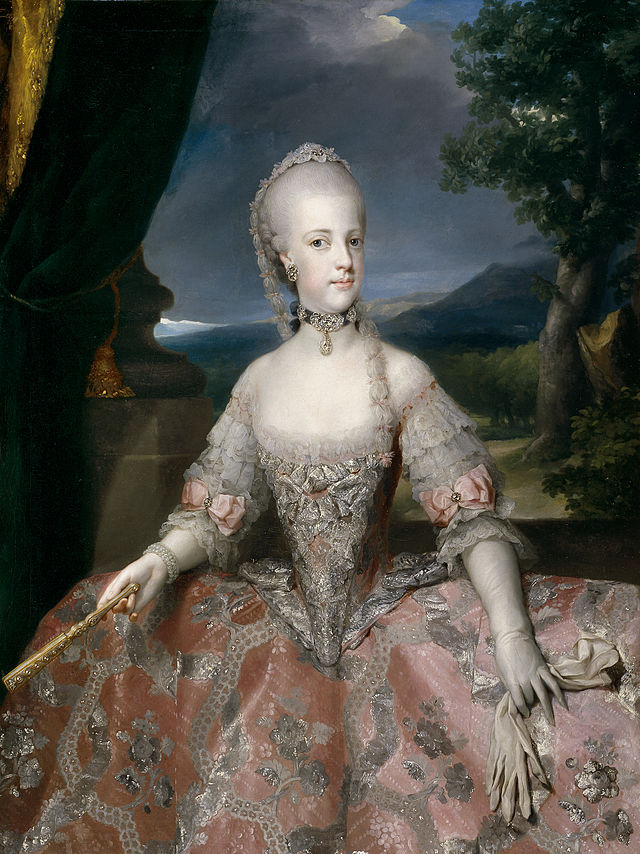
- August 6 – Princess Louise of Saxe-Meiningen, Landgravine of Hesse-Philippsthal-Barchfeld (d. 1805)
- August 13 – Queen Marie Caroline of Naples and Sicily (d. 1814)
- August 19 – Herman Bultos, Belgian wine merchant and theatre director (d. 1801)
- August 21
- Antonio Cavallucci, Italian painter (d. 1795)
- Jacques Roux, French priest (d. 1794)
- Michel Ange Bernard Mangourit, French diplomat (d. 1829)
- August 22 – Alexander Tormasov, Russian general (d. 1819)
- August 25
- Lodovico Gallina, Italian painter (d. 1787)
- Karl Mack von Leiberich, Austrian soldier (d. 1828)
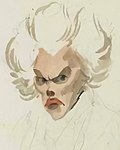
- September 8 – Carl Stenborg, Swedish opera singer (d. 1813)
- September 18 – Adrien-Marie Legendre, French mathematician (d. 1833)
- September 21 – Antoine de Bosc de la Calmette, Danish statesman, landscape architect (d. 1803)
- September 22
- James Bowdoin III, American philanthropist and statesman (d. 1811)
- Ruler Jeongjo of Joseon (d. 1800)
- September 27
- Marie-Gabriel-Florent-Auguste de Choiseul-Gouffier, French diplomat (d. 1817)
- Nathaniel Curzon, 2nd Baron Scarsdale of Great Britain (d. 1837)
- September 28 – John the Painter, British criminal (d. 1777)
- September 30
- Justin Heinrich Knecht, German composer, organist and music theorist (d. 1817)
- William Adams, British politician (d. 1811)
- October 2
- Samuel Story, Dutch admiral (d. 1811)
- Joseph Ritson, English antiquary (d. 1803)
- October 6 – Jeanne-Louise-Henriette Campan, French educator, lady in waiting (d. 1822)
- October 13 – William Grant, British lawyer, politician and judge (d. 1832)
- October 16
- Adolph Freiherr Knigge, German writer, Freemason (d. 1796)
- Joseph Papineau, Canadian politician (d. 1841)
- October 17 – Jacob Broom, American businessman, politician (d. 1810)
- October 20 – Fabian Gottlieb von Osten-Sacken, Baltic-German field marshal (d. 1837)
- October 22 – Ambrogio Minoja, Italian composer, professor of music (d. 1825)
- October 23 – Maria Anna Adamberger, Austrian stage actress (d. 1804)
- October 28 – Jean Henri Simon, Belgian engraver, soldier (d. 1834)

- November 1 – Józef Zajączek, Polish general, politician (d. 1826)
- November 2
- Andrey Razumovsky, Russian diplomat (d. 1836)
- Thomas Carpenter, American glassmaker (d. 1847)
- November 4
- George Finch, 9th Earl of Winchilsea, English cricketer (d. 1826)
- Jean-Gérard Lacuée, count of Cessac (d. 1841)
- November 5
- Jens Holmboe, Norwegian bailiff (d. 1804)
- Richard Richards (judge), British politician (d. 1823)
- November 8 – Claude-Augustin Tercier, French general (d. 1823)
- November 11 – John McMillan, Presbyterian minister, missionary in Pennsylvania (d. 1833)
- November 17 – Caspar Voght, German businessman (d. 1839)
- November 18 – P. H. Frimann, Norwegian-Danish poet (d. 1839)

- November 19 – George Rogers Clark, American soldier, officer and explorer (d. 1818)

- November 20
- Thomas Chatterton, English poet (d. 1770)
- November 21 – George Pozer, German-born British merchant (d. 1848)
- November 23 – Maksimilijan Vrhovac, Croatian Catholic bishop (d. 1827)
- November 25 – Johann Friedrich Reichardt, German composer (d. 1814)
- November 29 – Philippe-André Grandidier, French priest, historian (d. 1787)
- November 29 – Jemima Wilkinson, American preacher (d. 1819)[199]

- December 3 – Leonard Gyllenhaal, Swedish military officer, entomologist (d. 1840)
- December 6
- Robert de Lamanon, French botanist (d. 1787)
- December 8
- Sir John Barrington, 9th Baronet of Great Britain (d. 1818)
- Placidus a Spescha, Swiss mountain climber (d. 1833)
- Vicesimus Knox, English essayist, minister (d. 1821)
- December 9 – Antoine Étienne de Tousard, French general, military engineer (d. 1813)
- December 12
- Thomas Bulkeley, 7th Viscount Bulkeley, English aristocrat and politician (d. 1822)
- Pedro Andrés del Alcázar, Spanish and later Chilean Army officer and war hero (d. 1820)
- December 14 – Christoph August Tiedge, German poet (d. 1841)
- December 17 – John Kilby Smith, American Continental army officer (d. 1842)
- December 19 – François Isaac de Rivaz, French inventor, politician (d. 1828)
- December 21 – Jean-François Houbigant, French perfumer (d. 1807)
- December 28 – Conrad Tanner, Swiss abbot (d. 1825)
- December 30 – Sir Charles Malet, 1st Baronet, British East India Company official (d. 1815)
1753
- February 12 – François-Paul Brueys d'Aigalliers, French admiral (d. 1798)
- March 8 – William Roscoe, English writer (d. 1831)
- March 9 – Jean-Baptiste Kléber, French general (d. 1800)
- March 26 – Benjamin Thompson, American physicist and inventor (d. 1814)
- April 3 – Simon Willard, American horologist (d. 1848)
- April 28– Franz Karl Achard, German chemist, physicist and biologist (d. 1821)
- May 13 – Lazare Carnot, French general, politician and mathematician (d. 1823)
- June 5 – Johann Friedrich August Göttling, German chemist (d. 1809)
- July 9 – William Waldegrave, 1st Baron Radstock, British admiral, Governor of Newfoundland (d. 1825)
- c. August 11 – Thomas Bewick, English wood engraver (d. 1828)

- September 10 – John Soane, English architect (d. 1837)
- October 27 – Jean-Baptiste de Lavalette, French general (d. 1794)
- November 6 – Jean-Baptiste Breval, French composer (d. 1823)
- November 20 – Louis-Alexandre Berthier, French marshal (d. 1815)
- November 25 – Robert Townsend, member of the Culper Spy Ring (d. 1838)[200]
- December 3 – Samuel Crompton, English inventor (d. 1827)
- date unknown
- Francesc Antoni de la Dueña y Cisneros, Spanish bishop (d. 1821)
- John Haggin, "Indian fighter", one of the earliest settlers of Kentucky (d. 1825)
- Quang Trung, Vietnamese emperor (d. 1792)
- Phillis Wheatley, African-born American poet (d. 1784)
1754
- January 15
- Richard Martin, Irish founder of the Society for the Prevention of Cruelty to Animals (d. 1834)
- Jacques Pierre Brissot, French politician (d. 1795)
- January 30 – John Lansing Jr., American statesman (disappeared 1829)
- February 2 – Charles Maurice de Talleyrand-Périgord, French politician (d. 1838)[201]
- February 6 – Andrew Fuller, Particular Baptist Theologian and minister (d. 1815)
- February 17 – Nicolas Baudin, French explorer (d. 1803)
- March 4 – Benjamin Waterhouse, American physician, medical professor (smallpox vaccine pioneer) (d. 1846)
- March 17 – Madame Roland (Jeanne Marie Manon Philipon), French politician (d. 1793)
- March 23 – Baron Jurij Vega, Slovenian mathematician, physicist and artillery officer (d. 1802)
- April 6 – Frédéric-César de La Harpe, Swiss politician and revolutionary

- May 23 – William Drennan, Irish physician, poet and radical politician (d. 1820)
- May 31 – Catherine-Dominique de Pérignon, Marshal of France (d. 1818)
- June 4 – Franz Xaver von Zach, German scientific editor and astronomer (d. 1832)
- June 18 – Anna Maria Lenngren, Swedish poet, feminist and cultural figure (d. 1817)
- July 11 – Thomas Bowdler, English physician (d. 1825)
- August 9 – Pierre Charles L'Enfant, French architect (d. 1825)
- August 18 – François, marquis de Chasseloup-Laubat, French general (d. 1833)
- August 21 – William Murdoch, Scottish inventor (d. 1839)
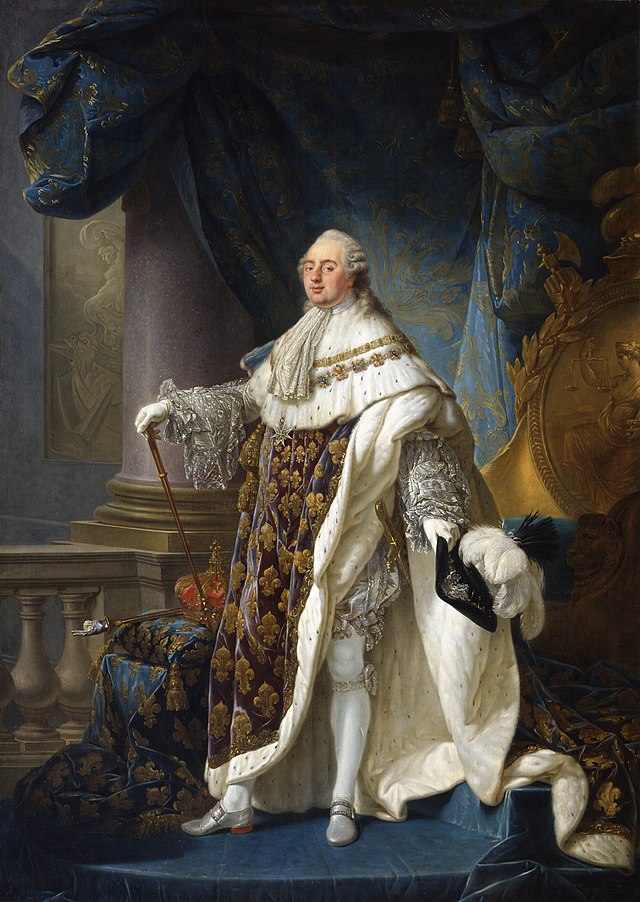
- August 23 – Louis XVI, last king of France before the Revolution (d. 1793)[202]
- September 9 – William Bligh, British sailor (d. 1817)
- September 20 – Emperor Paul I of Russia (d. 1801)
- September 26 – Joseph Proust, French chemist (d. 1826)
- October 9 – Jean-Baptiste Regnault, French painter (d. 1829)
- October 20 – James Hillhouse, American politician and congressman from Connecticut, 1791 until 1810 (d. 1832)
- October 28 – John Laurens, American soldier (d. 1782)
- November 19 – Pedro Romero, Spanish torero (d. 1839)
- December 7 – Jack Jouett, American politician (d. 1822)
- December 9 – Étienne Ozi, French composer (d. 1813)
- December 15 – Usman dan Fodio, Nigerian Islamic theologian (d. 1817)
- December 24 – George Crabbe, English poet (d. 1832)[203]
- Eve Frank, Bulgarian religious leader (d. 1816)
- Richard Hancorne, British Royal Navy officer (d. 1792)
1755


- January 25 – Paolo Mascagni, Italian anatomist (d. 1815)
- January 28 – Samuel Thomas von Sömmerring, German physician, anatomist (d. 1830)
- February 2 – Uriah Tracy, American politician and congressman from Connecticut, 1793 until 1807 (d. 1807)
- February 5 – Caroline Müller, Danish operatic mezzo-soprano, actress and dancer (d. 1826)
- February 11 – Albert Christoph Dies, German composer (d. 1822)
- February 21 – Anne Grant, Scottish poet (d. 1838)
- March 24 – Rufus King, American lawyer, politician and diplomat (d. 1827)
- April 3 – Simon Kenton, American frontiersman, Revolutionary Militia General (d. 1836)
- April 10 – Samuel Hahnemann, German founder of homeopathy (d. 1843)
- April 11 – James Parkinson, English surgeon, apothecary, geologist, palaeontologist and political activist (d. 1824)
- April 16 – Louise Élisabeth Vigée Le Brun, French painter (d. 1842)
- June 6 – Nathan Hale, American Revolutionary War captain, writer and patriot (d. 1776)
- June 15 – Antoine François, comte de Fourcroy, French chemist (d. 1809)
- June 30 – Paul Barras, French politician (d. 1829)
- September 9 – Benjamin Bourne, American politician (d. 1808)
- September 13 – Oliver Evans, American inventor, engineer and businessman (d. 1819)
- October 2 – Hannah Adams, American author (d. 1831)
- November 1 – Henriette von Crayen, German salonnière (d. 1832)
- November 2 – Marie Antoinette, Queen Consort of France (d. 1793)[204]
- November 12 – Gerhard von Scharnhorst, Prussian general (d. 1813)
- November 17
- Louis XVIII of France, brother of King Louis XVI (d. 1824)[205]
- Charles Manners-Sutton, Archbishop of Canterbury (d. 1828)
- December 3 – Gilbert Stuart, American painter from Rhode Island (d. 1828)
- date unknown
- Maria Elizabetha Jacson, British botanist (d. 1829)
- Yelena Shidyanskaya, Russian commander (d. 1849)
1756
- January 19 – Guillaume-Antoine Olivier, French entomologist (d. 1814)
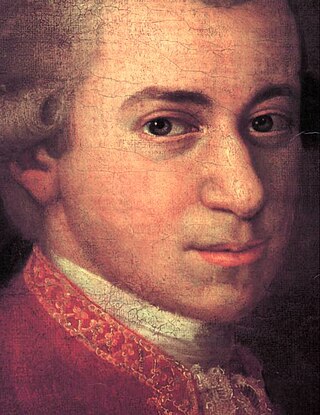
- January 27 – Wolfgang Amadeus Mozart, Austrian composer (d. 1791)
- February 6 - Aaron Burr, American politician (d. 1836)
- February 20 – Angelica Schuyler Church, American socialite, daughter of Genl.Philip Schuyler, sister to Elizabeth Schuyler Hamilton (d. 1814)
- March 3 – William Godwin, English writer (d. 1836)
- March 4 – Sir Henry Raeburn, Scottish painter (d. 1823)[206]
- May 10 – Singu Min, king of Myanmar (k. 1782)
- May 18 – Ignaz Aurelius Fessler, Hungarian-born court councillor, minister to Czar Alexander I of Russia (d. 1839)
- May 27 – King Maximilian I Joseph of Bavaria (d. 1825)
- May 31 – Abbé Faria, Luso-Goan Catholic monk, student of hypnotism (d. 1819)
- June 6 – John Trumbull, American painter (d. 1843)
- June 20 – Joseph Martin Kraus, German-Swedish composer (d. 1792)
- July 7 – Gustaf Adolf Reuterholm, Swedish statesman (d. 1813)
- July 31 – Dheeran Chinnamalai, Tamil king (d. 1805)
- August 1 – Pierre Louis Prieur, French politician (d. 1827)
- August 29 – Heinrich Graf von Bellegarde, Austrian field marshal, statesman (d. 1845)
- September 7 – Willem Bilderdijk, Dutch author (d. 1831)
- September 13 – Benedikte Naubert, German writer (d. 1819)
- September 23 – John Loudon McAdam, Scottish engineer, road-builder (d. 1836)
- October 21 – Philippine Engelhard, German writer, scholar (d. 1831)
- November 3 – Pierre Laromiguière, French philosopher (d. 1837)
- December 7 – John Littlejohn, British-American sheriff and Methodist preacher (d. 1836)[207]
- date unknown
- Maria Pellegrina Amoretti, Italian lawyer (d. 1787)
- Gideon Morris, trans-Appalachian pioneer (d. 1798)
- Hilchen Sommerschild, Norwegian educator (d. 1831)
1757


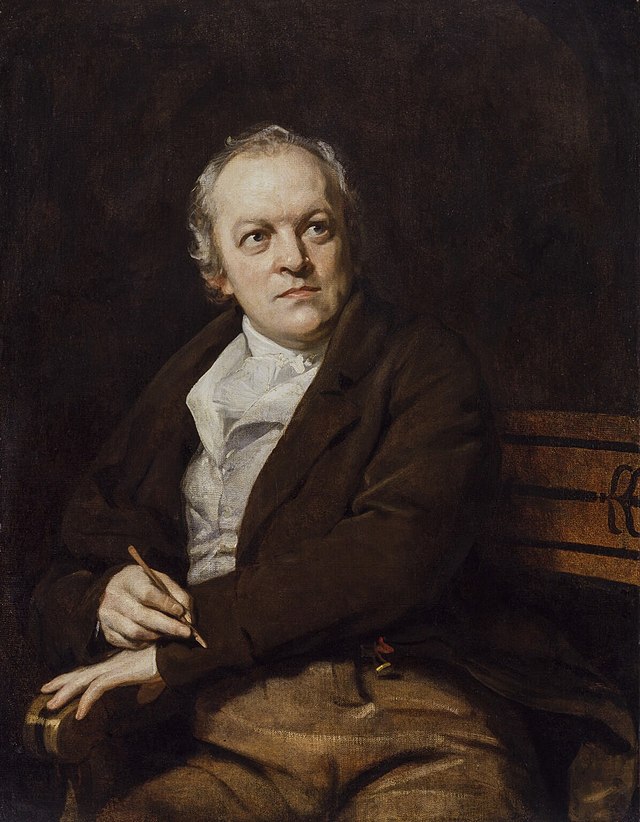
- January 11 – Alexander Hamilton, first U.S. Secretary of the Treasury (most cited date of birth) (d. 1804)
- January 16 – Richard Goodwin Keats, British admiral, Governor of Newfoundland (d. 1834)
- February 3 – Joseph Forlenze, Italian ophthalmologist (d. 1833)
- February 20 – John 'Mad Jack' Fuller, English philanthropist (d. 1834)
- April 9 – Edward Pellew, 1st Viscount Exmouth, British admiral (d. 1833)
- April 28 – Edmund Butcher, English Unitarian minister (d. 1822)
- May 6 – Veronika Gut, Swiss rebel heroine (d. 1829)
- May 7 – Ludwig von Brauchitsch, Prussian general (d. 1827)
- May 25 – Louis-Sébastien Lenormand, French chemist, physicist and inventor (d. 1837)
- May 30 – Henry Addington, 1st Viscount Sidmouth, Prime Minister of the United Kingdom (d. 1844)
- June 18 – Gervasio Antonio de Posadas, Argentine leader (d. 1833)
- June 22 – George Vancouver, British explorer (d. 1798)
- July 20 – Garsevan Chavchavadze, Georgian diplomat, politician (d. 1811)
- August 9 – Elizabeth Schuyler, wife of Alexander Hamilton, co-founder of New York's first orphanage (d. 1854)
- August 9 – Thomas Telford, Scottish-born civil engineer, architect (d. 1834)
- August 23 – Marie Magdalene Charlotte Ackermann, German actress (d. 1775)
- September 6 – Gilbert du Motier, Marquis de Lafayette, French soldier, statesman (d. 1834)
- September 20 – Esther de Gélieu, Swiss educator (d. 1817)
- October 9 – King Charles X of France (d. 1836)
- October 21 – Charles-Pierre Augereau, Marshal of France and duc de Castiglione (d. 1816)
- November 1 – Antonio Canova, Italian sculptor (d. 1822)
- November 28 – William Blake, English poet and artist (d. 1827)[208]
- December 7 – José Antonio Pareja, Spanish admiral (d. 1813)
- December 30 – Sebastián Kindelán y O'Regan, Spanish colonial governor (d. 1826)
- Date unknown
- Agnes Ibbetson, English plant physiologist (d. 1823)
- John Leamy, Irish–American merchant (d. 1839)
1758
- January 6 – Charles Ganilh, French economist, politician (d. 1836)
- January 9 – George Leveson-Gower, 1st Duke of Sutherland, born Viscount Trentham, British politician and landowner (d. 1833)
- January 11 – François Louis Bourdon, French Revolutionary politician (d. 1797)
- January 17 – Marie Anne Simonis, Belgian textile industrialist (d. 1831)
- January 20 – Marie-Anne Pierrette Paulze, French chemist (d. 1836)
- January 24 – Frederick Ponsonby, 3rd Earl of Bessborough (d. 1844)
- February 1 – David Ochterlony, Massachusetts-born general with the East India Company (d. 1825)
- February 3
- Francis Napier, 8th Lord Napier of Great Britain (d. 1823)
- Vasily Kapnist, Ukrainian poet, playwright (d. 1823)
- February 4 – George Thicknesse, 19th Baron Audley, English peer (d. 1818)
- February 10 – Amalia Holst, German writer, intellectual and feminist (d. 1829)
- February 17 – John Pinkerton, British antiquarian (d. 1826)
- February 28 – Nicolas François, Count Mollien, French financier (d. 1850)
- March 9 – Franz Joseph Gall, German pioneering neuroanatomist (d. 1828)
- March 12 – Leopold Karel, Count of Limburg Stirum (d. 1840)
- March 15 – Magdalene Sophie Buchholm, Norwegian poet (d. 1826)
- April 4
- John Hoppner, English portrait-painter (d. 1810)
- Pierre-Paul Prud'hon, French painter (d. 1823)
- April 16 – Christian Karl August Ludwig von Massenbach, Prussian soldier (d. 1827)
- April 22 – Francisco Javier Castaños, 1st Duke of Bailén, Spanish general (d. 1852)
- April 23
- Alexander Hood, British Royal Navy officer (k. 1798)
- Alexander Cochrane, British Royal Navy officer (d. 1832)
- Philip Gidley King, British Royal Navy officer, colonial administrator (d. 1808)
- April 27 – Charles Dumont de Sainte-Croix, French zoologist (d. 1830)

- April 28 – James Monroe, fifth President of the United States (d. 1831)
- April 29 – Georg Carl von Döbeln, Swedish officer, general and war hero (d. 1820)
- April 30
- Emmanuel Vitale, Maltese military leader (d. 1802)
- Jane West, English writer (d. 1852)
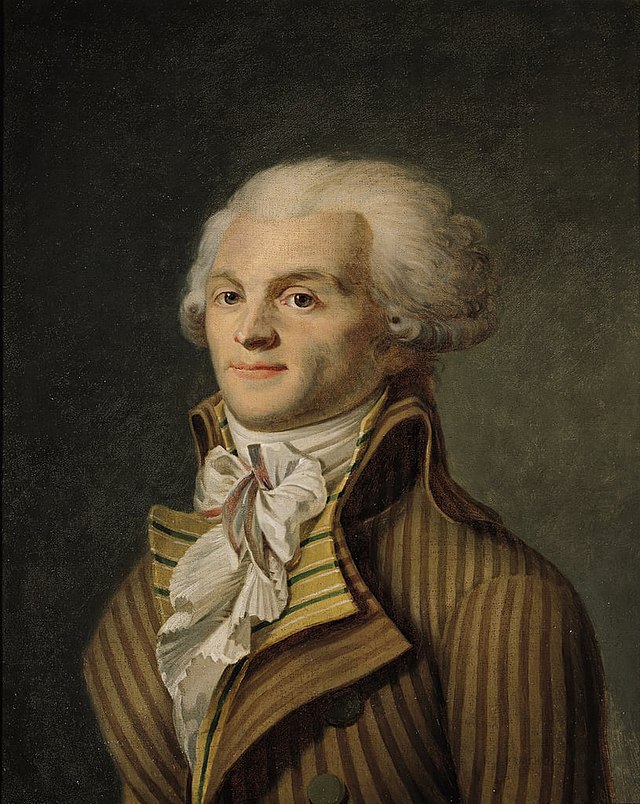
- May 6
- Maximilien de Robespierre, French revolutionary (d. 1794)[209]
- André Masséna, Napoleonic general, Marshal of France (d. 1817)
- May 8 – John Heath, U.S. Representative for Virginia (d. 1810)
- May 15 – Thomas Taylor, English neoplatonist translator (d. 1835)
- May 17
- Sir John St Aubyn, 5th Baronet, English fossil collector (d. 1839)
- Honoré IV, Prince of Monaco (d. 1819)
- June 19 – Raffaello Sanzio Morghen, Italian engraver (d. 1833)
- June 29 – Clotilde Tambroni, Italian philologist, linguist (d. 1817)
- July 25 – Elizabeth Hamilton, English writer (d. 1816)
- July 31 – Rosalie de Constant, Swiss naturalist (d. 1834)
- July 31 – Jeremiah Colegrove, U.S. farmer, manufacturer and soldier (d. 1836)
- August 5 – Emperor Go-Momozono of Japan (d. 1779)
- August 14 – Carle Vernet, French painter (d. 1835)

- August 24 – Thomas Picton, British soldier, colonial governor (k. 1815)
- August 25 – Israel Pellew, English naval officer (d. 1832)
- September 9 – Alexander Nasmyth, Scottish portrait and landscape painter (d. 1840)
- September 10 – Hannah Webster Foster, U.S. novelist (d. 1840)
- September 18 – Louis Friant, French Napoleonic soldier (d. 1829)
- September 20 – Jean-Jacques Dessalines, leader of the Haitian Revolution (d. 1806)

- September 21
- Antoine Isaac Silvestre de Sacy, French linguist, orientalist (d. 1838)
- Christopher Gore, U.S. lawyer, politician (d. 1827)
- September 25 – Maria Anna Thekla Mozart called Marianne, known as Bäsle ("little cousin"), cousin of Wolfgang Amadeus Mozart (d. 1841)
- September 26 – Cosme Argerich, Argentine Surgeon General (d. 1820)

- September 29
- Horatio Nelson, 1st Viscount Nelson, British admiral (d. 1805)
- Fanny von Arnstein, Austrian salonnière (d. 1818)
- October 5 – Seymour Fleming, British noblewoman (d. 1818)
- October 6 – Watkin Tench, British Marine officer (d. 1833)
- October 11 – Heinrich Wilhelm Matthias Olbers, German astronomer (d. 1840)
- October 15 – Johann Heinrich von Dannecker, German sculptor (d. 1841)
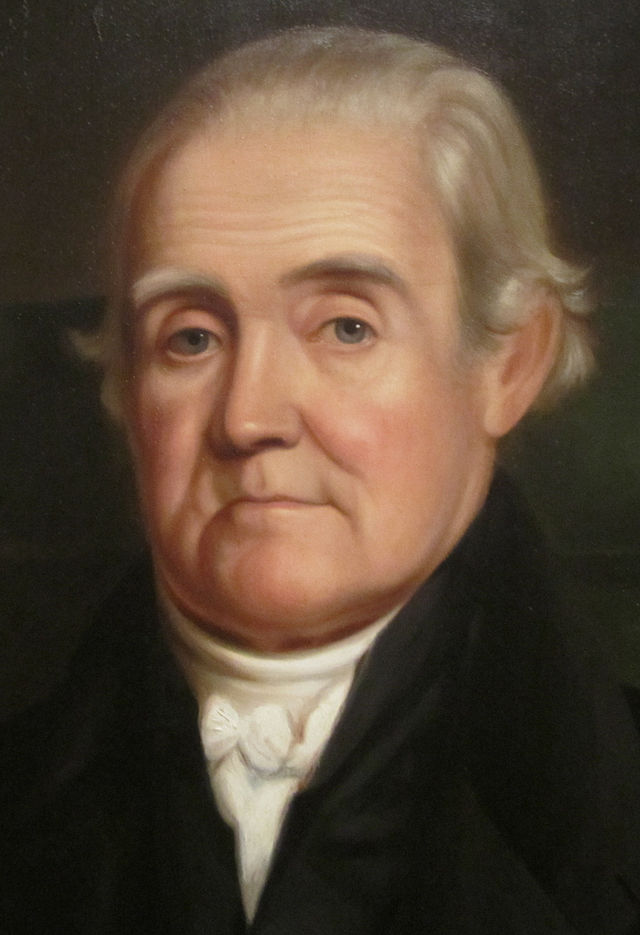
- October 16 – Noah Webster, U.S. lexicographer (d. 1843)
- October 22/6 – Vincenzo Dandolo, Italian chemist, agriculturist (d. 1819)
- October 28 – John Sibthorp, English botanist (d. 1796)
- October 28 – Joseph-François-Louis-Charles de Damas, French general (d. 1829)
- October 31 – Thomas Gisborne, Anglican priest, abolitionist (d. 1846)
- November 5 – Louis-Marie Aubert du Petit-Thouars, French botanist (d. 1831)
- November 11
- Carl Friedrich Zelter, German composer (d. 1832)
- Caleb P. Bennett, U.S. soldier, politician (d. 1836)
- November 14 – William Bradley, British Royal Navy officer and cartographer (d. 1833)
- November 16 – Peter Andreas Heiberg, Danish author, philologist (d. 1841)
- December 5 – George Beauclerk, 4th Duke of St Albans (d. 1787)
- December 9 – Richard Colt Hoare, English antiquarian, archaeologist (d. 1838)
- December 21 – Jean Baptiste Eblé, French general (d. 1812)
- Georges Antoine Chabot, French jurist, statesman (d. 1819)
- Nicholas Fish, U.S. Revolutionary soldier (d. 1833)
- Anthimos Gazis, Greek scholar, philosopher (d. 1828)
- Samuel Hardy, U.S. lawyer and statesman from Virginia (d. 1785)
- Jamphel Gyatso, 8th Dalai Lama of Tibet (d. 1804)
- Charles Lee, U.S. Attorney General (d. 1815)
- Samuel Sterett, American politician, U.S. Representative for Maryland (d. 1833)
- Marie-Claire Heureuse Félicité, Empress of Haiti (d. 1858)
- Kamehameha I, King of Hawaii (d. c. 1819)
1759
- January 25 – Robert Burns, Scottish poet (d. 1796)[210]
- January 29 – Louis Augustin Guillaume Bosc, French botanist (d. 1828)
- February 15 – Friedrich August Wolf, German philologist, archaeologist (d. 1824)
- February 22 – Claude Lecourbe, French general (d. 1815)
- April 19 – August Wilhelm Iffland, German actor (d. 1814)
- April 22 – James Freeman, first clergyman in America to call himself a Unitarian (d. 1835)

- April 27 – Mary Wollstonecraft, English feminist author (d. 1797)[211]
- May 15 – Maria Theresia von Paradis, Austrian musician, composer (d. 1824)
- May 20 – William Thornton, American architect (d. 1828)
- May 21 – Joseph Fouché, French statesman (d. 1820)
- May 28 – William Pitt the Younger, Prime Minister of the United Kingdom (d. 1806)[212]
- June 21 – Alexander J. Dallas, American statesman and financier (d. 1817)
- June 25 – William Plumer, American lawyer, Baptist lay preacher, and politician (d. 1850)
- July 2 – Nathan Read, American engineer and politician (d. 1849)
- July 31 – Ignaz Anton von Indermauer, Austrian nobleman and government official (d. 1796)

- August 24 – William Wilberforce, British abolitionist (d. 1833)
- September 10 – Lemuel Cook, American Revolutionary War veteran, centenarian (d. 1866)
- September 19 – William Kirby, English entomologist (d. 1850)
- October 25
- October 26 – Georges Danton, French Revolutionary leader (d. 1794)
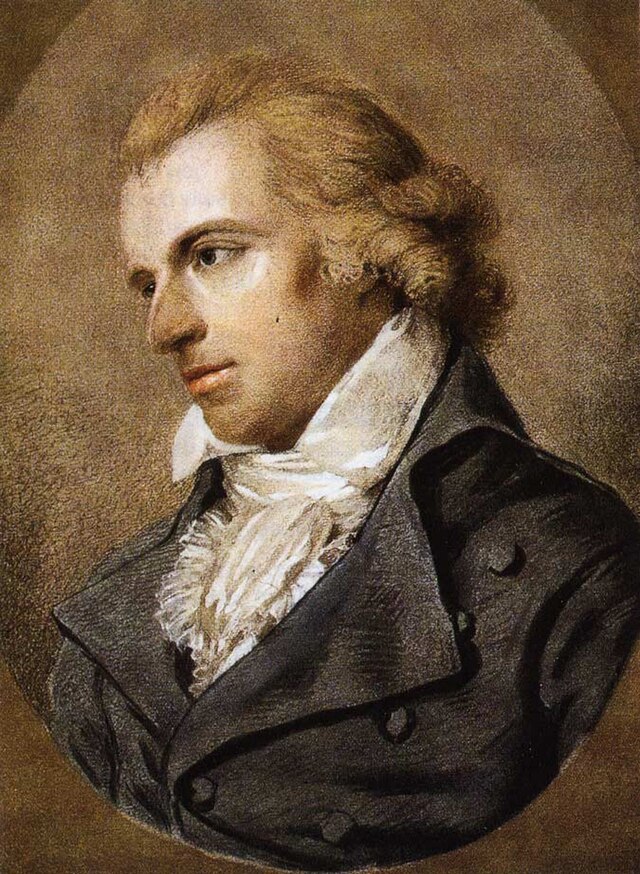
- November 10 – Friedrich Schiller, German writer (d. 1805)
- November 27 – Franz Krommer, Czech composer (d. 1831)
- November 23 – Felipe Enrique Neri, legislator and colonizer of Texas (d. 1820)
- December 2 – James Edward Smith, English botanist (d. 1828)
- Date unknown – Maria Petraccini, Italian anatomist, physician (d. 1791)
- Salomea Deszner, Polish actress, singer and theater director (d. 1806)
- Alice Flowerdew, British teacher, religious poet, hymnwriter (d. 1830)
Remove ads
Deaths
1750
- January 16 – Ivan Trubetskoy, Russian field marshal (b. 1667)
- January 22 – Franz Xaver Josef von Unertl, Bavarian politician (b. 1675)
- January 23 – Ludovico Antonio Muratori, Italian historian and scholar (b. 1672)
- January 26 – Albert Schultens, Dutch philologist (b. 1686)
- January 29 – Sophia Schröder, Swedish soprano (b. 1712)
- February 7 – Algernon Seymour, 7th Duke of Somerset (b. 1684)
- February 8 – Aaron Hill, English writer (b. 1685)
- February 19 – Jan Frans van Bredael, Flemish painter (b. 1686)
- March 6 – Domenico Montagnana, Italian luthier (b. 1686)
- March 29 – James Jurin, British mathematician, doctor (b. 1684)
- April 7 – George Byng, 3rd Viscount Torrington, British Army general (b. 1701)
- May 3 – John Willison, Scottish minister, writer (b. 1680)
- May 17 – Georg Engelhard Schröder, Swedish artist (b. 1684)
- May 28 – Emperor Sakuramachi of Japan (b. 1720)
- June 15 – Marguerite de Launay, baronne de Staal, French author (b. 1684)
- July 15 – Vasily Tatishchev, Russian statesman, ethnographer (b. 1686)

- July 28
- Johann Sebastian Bach, German composer (b. 1685)
- Conyers Middleton, English minister (b. 1683)
- July 31 – King John V of Portugal (b. 1689)
- August 8 – Charles Lennox, 2nd Duke of Richmond, English aristocrat, philanthropist and cricket patron (b. 1701)
- August 12 – Rachel Ruysch, Dutch painter (b. 1664)
- September 15 – Charles Theodore Pachelbel, German composer (b. 1690)
- October 3
- Georg Matthias Monn, Austrian composer (b. 1717)
- James MacLaine, Irish highwayman (b. 1724)
- October 16 – Sylvius Leopold Weiss, German composer, lutenist (b. 1687)
- November 1 – Gustaaf Willem van Imhoff, Dutch Governor-General of the Dutch East Indies (b. 1705)
- December 1 – Johann Gabriel Doppelmayr, German mathematician, astronomer, and cartographer (b. 1671)
- December 13 – Philemon Ewer, English shipbuilder (b. 1702)
- December 16
- Nasir Jang Mir Ahmad, son of Turkic noble Nizam-ul-Mulk (b. 1712)
- Nasir Jung, Head of Hyderabad State (b. 1712)
1751



- January 17 – Tomaso Albinoni, Italian composer (b. 1671)
- January 20 – John Hervey, 1st Earl of Bristol, English politician (b. 1665)
- January 25 – Paul Dudley, Massachusetts Attorney-General (b. 1675)
- January 29 – Martin Knutzen, German philosopher (b. 1713)
- February 5 – Henri François d'Aguesseau, Chancellor of France (b. 1668)
- February 7 – Albert Borgard, Danish artillery and engineer officer (b. 1659)
- March 21 – Johann Heinrich Zedler, German publisher (b. 1706)
- March 24 – János Pálffy, Hungarian field marshal, Palatine (b. 1664)
- March 25 – King Frederick I of Sweden (b. 1676)
- March 29 – Thomas Coram, English sea captain, philanthropist (b. c. 1668)
- March 31 – Frederick, Prince of Wales, Hanoverian-born heir to the British throne (b. 1707)
- April 19 – Peter Lacy, Irish-born Russian field marshal (b. 1678)
- April 20 – Gisela Agnes of Anhalt-Köthen, Princess of Anhalt-Köthen by birth and by marriage Princess of Anhalt-Dessau (b. 1722)
- May 20 – Domènec Terradellas, Spanish opera composer (b. 1713)
- June 9 – John Machin, English mathematician (b. c.1686)
- June 20 – Adriaan Valckenier, Dutch Governor-General of the Dutch East Indies (1737–1741) (b. 1695)
- August 18 – Samuel von Schmettau, Prussian field marshal (b. 1684)
- August 22 – Andrew Gordon, British physicist (b. 1712)
- August 30 – Christopher Polhem, Swedish scientist (b. 1661)
- October 22 – William IV, Prince of Orange, Stadtholder of the Dutch Republic (b. 1711)[213]
- October 26 – Philip Doddridge, English nonconformist religious leader (b. 1702)
- November 18 – Abraham Vater, German anatomist (b. 1684)
- December 12 – Henry St John, 1st Viscount Bolingbroke, English statesman, philosopher (b. 1678)
- December 16 – Leopold II, Prince of Anhalt-Dessau, Prussian general (b. 1700)
- December 19 – Louise of Great Britain, queen of Frederick V of Denmark (b. 1724)
- December 29 – Charles, Count of Armagnac, French noble (b. 1684)
1752


- January 4 – Gabriel Cramer, Swiss mathematician (b. 1704)
- January 14 – Devasahayam Pillai, beatified Indian Catholic (b. 1712)
- January 16 – Francis Blomefield, English topographer (b. 1705)
- February 9 – Fredrik Hasselqvist, Swedish traveller and naturalist (b. 1722)
- February 10 – Henriette of France, daughter of King Louis XV (b. 1727)
- February 15 – Beinta Broberg, notorious Faroese vicar's wife (b. 1667)
- March 9 – Claude Joseph Geoffroy, brother of Étienne François Geoffroy (b. 1685)
- March 21 – Gio Nicola Buhagiar, Maltese painter (b. 1698)[214]
- April 29 – Matthew Michell, English politician (b. 1705)
- May 3 – Samuel Ogle, British provincial Governor of Maryland (b. 1694)
- May 6 – Sophia of Saxe-Weissenfels, Countess of Brandenburg-Bayreuth, German aristocrat and culture patron (b. 1684)
- May 22 – Johann Alexander Thiele, German painter (b. 1685)
- May 23 – William Bradford, British-born printer (b. 1663)
- June 16
- Giulio Alberoni, Italian cardinal (b. 1664)
- Joseph Butler, English priest, theologian (b. 1692)[215]
- June 21 – Old Briton, Piankashaw chieftain (b. c. 1695)
- July 20 – Johann Christoph Pepusch, German composer (b. 1667)
- July 29 – Peter Warren, British admiral (b. 1703)
- August 22 – William Whiston, English mathematician (b. 1667)
- September 1 – Jacopo Amigoni, Italian painter (b. 1675)
- November 2 – Johann Albrecht Bengel, German scholar (b. 1687)
- November 5 – Carl Andreas Duker, German classical scholar (b. 1670)
- November 6 – Ralph Erskine, Scottish minister (b. 1685)
- November 27 – William Digby, 5th Baron Digby, English politician, baron (b. 1661)
- December 3 – Henri-Guillaume Hamal, Walloon musician and composer (b. 1685)[216]
- December 11 – Adolphus Frederick III, Duke of Mecklenburg-Strelitz (b. 1686)
1753

- January 11 – Sir Hans Sloane, Irish-born physician and collector (b. 1660)
- January 14 – George Berkeley, Irish-born philosopher and bishop (b. 1685)
- January 23 – Louise Bénédicte de Bourbon, French royal princess, saloniste (b. 1676)
- February 16 – Giacomo Facco, Italian composer (b. 1676)
- February 22 – Eleonore of Löwenstein-Wertheim, German countess (b. 1686)
- May 23 – Franciszka Urszula Radziwiłłowa, Polish dramatist (b. 1705)
- June 7 – Archibald Cameron of Locheil, last Scottish Jacobite to be executed for treason (b. 1707)
- June 10 – Joachim Ludwig Schultheiss von Unfriedt, German architect (b. 1678)
- August 5 – Charlotta Elisabeth van der Lith, politically active Governor's wife in Surinam (b. 1700)
- August 6 – Georg Wilhelm Richmann, Russian physicist (struck by lightning) (b. 1711)
- August 19 – Balthasar Neumann, German architect and military engineer (b. 1687)
- September 20 – Johann Georg Weishaupt, German lawyer (b. 1716)
- October 12 – Sir Danvers Osborn, 3rd Baronet, British politician and governor of the Province of New York (b. 1715)
- October 26 – Margareta von Ascheberg, Swedish land owner, countess and acting regimental colonel (b. 1671)
- November 9 – Charles August, Prince of Nassau-Weilburg, Prince of Nassau-Weilburg (1719–1753) (b. 1685)
- November 10 – Bertrand-François Mahé de La Bourdonnais, French naval officer and governor of Isle de France (Mauritius) (b. 1699)
- November 22 – Samuel-Jacques Bernard, French nobility (b. 1686)
- December 4 – Richard Boyle, 3rd Earl of Burlington, English architect (b. 1694)
- December 25 – Godolphin Arabian, Yemeni-foaled English thoroughbred stallion (b. c. 1724)
1754


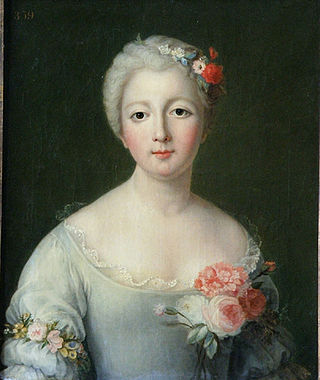



- January 5 – Marie Isabelle de Rohan, Duchess of Tallard, French noblewoman, granddaughter of Madame de Ventadour (b. 1699)
- January 10 – Edward Cave, English editor, publisher (b. 1691)
- January 16 – Edward Trelawny, British governor of Jamaica 1738–1752 (b. 1699)
- January 17 – Filippo Maria Monti, Cardinal in the Catholic Church (b. 1675)
- January 20 – Christian August, Duke of Schleswig-Holstein-Sonderburg-Augustenburg (b. 1696)
- January 28 – Ludvig Holberg, Norwegian dramatist and writer (b. 1684)[217]
- February 2 – William Benson, English architect and self-serving Whig place-holder (b. 1682)
- February 5 – Caroline Thielo, Danish actress (b. 1735)
- February 16 – Richard Mead, English physician (b. 1673)
- February 22 – Xavier, Duke of Aquitaine, fils de France of the House of Bourbon (b. 1753)
- February 27 – Tomás de Almeida, first Patriarch of Lisbon (b. 1670)
- March 4 – Léopold Philippe d'Arenberg, 4th Duke of Arenberg (b. 1690)
- March 6 – Henry Pelham, Prime Minister of the United Kingdom (b. 1694)
- March 9 – Alexander Brodie, Scottish clan chief and politician (b. 1697)
- March 10 – Marc de Beauvau, Prince of Craon (b. 1679)
- March 22 – Samuel Bourn the Younger, English dissenting minister (b. 1689)
- March 23 – Johann Jakob Wettstein, Swiss theologian (b. 1693)
- March 31 – Hilario a Jesu Costa, Roman Catholic prelate, Apostolic Vicar of Eastern Tonking (1737–1754), Titular Bishop of Corycus (1735–1737) (b. 1696)
- April 2 – Thomas Carte, English historian (b. 1686)
- April 4 – Charles Guillaume Loys de Bochat, 18th-century Swiss jurist and antiquarian (b. 1695)
- April 5 – Lord Archibald Hamilton, Scottish officer of the Royal Navy (b. 1673)
- April 8 – José de Carvajal y Lancáster, Spanish statesman (b. 1698)
- April 9 – Christian Wolff, German philosopher, mathematician, scientist (b. 1679)
- April 15 – Jacopo Riccati, Italian mathematician (b. 1676)
- April 21 – Thomas Lawrence, merchant who was elected to six one-year terms as mayor of Philadelphia (b. 1689)
- April 27 – Marie Karoline von Fuchs-Mollard (b. 1681)
- April 30 – Maria Teresa Felicitas d'Este (b. 1726)
- May 14 – Pierre-Claude Nivelle de La Chaussée, French writer (b. 1692)
- May 18 – Sir John Strange, English politician (b. 1696)
- May 23 – John Wood, the Elder, English architect (b. 1704)
- June 2 – Ebenezer Erskine, Scottish religious dissenter (b. 1680)
- June 7 – Nicolai Eigtved, Danish architect (b. 1701)
- June 21 – Johann Baptist Martinelli, Austrian architect (b. 1701)
- June 28
- Sollom Emlyn, Irish legal writer (b. 1697)
- Martin Folkes, English antiquarian (b. 1690)
- July 4 – Philippe Néricault Destouches, French playwright who wrote 22 plays (b. 1680)
- July 14 – François Dominique de Barberie de Saint-Contest, French diplomat (b. 1701)
- August 2 – John Waller, American politician who served in the House of Burgess in 1714 (b. 1673)
- August 14 – Maria Anna of Austria, Archduchess of Austria and Queen consort of Portugal (b. 1683)
- August 26 – Charles Powlett, 3rd Duke of Bolton (b. 1685)[218]
- September 1 – Carl Georg Siöblad, Swedish naval officer, Governor of Malmöhus County 1740–1754 (b. 1683)
- September 2 – Sir Tancred Robinson, 3rd Baronet, English Rear admiral and Lord Mayor of York (b. 1685)
- September 9 – Peter Mawney, member of one of the few French Huguenot families that remained in Rhode Island (b. 1689)
- October 4 – Tanacharison, Catawba Indian chief (b. c. 1700)
- October 5 – Safdar Jang (b. 1708)
- October 8 – Henry Fielding, English novelist and dramatist known for his earthy humour and satire (b. 1707)[219]
- October 10 – Dorothea Krag, Danish General Postmaster and noble (b. 1675)
- October 13
- Mahadhammaraza Dipadi, last king of Toungoo dynasty of Burma (Myanmar), 1733–1752 (b. 1714)
- Hark Olufs, North Frisian sailor (b. 1708)
- October 28 – Friedrich von Hagedorn, German poet (b. 1708)
- November 20 – Robert Darwin of Elston, English lawyer and physician (b. 1682)
- November 24 – William Tutty, English-Canadian clergyman (b. 1715)
- November 27 – Abraham de Moivre, French mathematician (b. 1667)
- November 30 – Charles Willing, Philadelphia merchant (b. 1710)
- December 5 – Henry de Nassau d'Auverquerque, 1st Earl of Grantham (b. 1673)
- December 12 – Wu Jingzi, Chinese writer (b. 1701)
- December 13 – Mahmud I, Sultan of the Ottoman Empire from 1730 to 1754 (b. 1696)
- December 22 – Willem van Keppel, 2nd Earl of Albemarle (b. 1702)
- December 27 – Charles Craven, son of Sir William Craven and Margaret Clapham (b. 1682)
1755


- February 10 – Montesquieu, French writer (b. 1689)
- February 11 – Francesco Scipione, marchese di Maffei, Italian archaeologist (b. 1675)
- March 2 – Louis de Rouvroy, duc de Saint-Simon, French writer (b. 1675)
- March 7 – Thomas Wilson, Bishop of Sodor and Man (b. 1663)
- March 10 – Johann David Köhler, German historian (b. 1684)
- April 6 – Richard Rawlinson, English minister, antiquarian (b. 1690)
- April 30 – Jean-Baptiste Oudry, French painter (b. 1686)
- June 26 – Iyasu II, Emperor of Ethiopia (b. c. 1723)
- July 9 – Daniel Liénard de Beaujeu, Canadian officer during the Seven Years' War (b. 1711)
- July 13 – Edward Braddock, British general (b. c. 1695)
- July 14 – Jacques-Nompar III de Caumont, duc de La Force, French nobleman (b. 1714)
- August 13 – Francesco Durante, Italian composer (b. 1684)[220]
- September 2 – Princess Marie Zéphyrine of France, sister of Louis XVI (b. 1750)
- September 8
- Jacques Legardeur de Saint-Pierre, Canadian military commander (b. 1701)
- Hendrick Theyanoguin, Mohawk Council leader killed in the Battle of Lake George (b. c. 1691)
- Ephraim Williams, American philanthropist (b. 1715)
- September 9 – Johann Lorenz von Mosheim, German historian (b. 1694)
- September 13 – Pierre Gaultier de La Vérendrye, French-Canadian explorer (b. 1714)
- October 4 – Johann Georg Christian, Prince of Lobkowicz, Austrian field marshal (b. 1686)
- October 16 – Gerard Majella, Italian Roman Catholic lay brother and saint (b. 1725)
- October 22 – Elisha Williams, American rector of Yale College (b. 1694)
- October 28 – Joseph Bodin de Boismortier, French composer (b. 1689)
- November 25 – Johann Georg Pisendel, German musician (b. 1687)
- December 1 – Maurice Greene, English composer (b. 1696)
- December 5 – William Cavendish, 3rd Duke of Devonshire (b. 1698)
- approximate date
- Queen Nanny of the Maroons, Jamaican national heroine (b. 1686)
- Cai Wan, politically influential Chinese poet (b. 1695)
1756
- January 17 – Isabella Simons, banker in the Austrian Netherlands (b. 1694)
- January 18 – Francis George of Schönborn-Buchheim (b. 1682)
- February 22 – Akdun, Chinese Manchu statesman (b. 1685)

- February 25 – Eliza Haywood, English actress, writer (b. 1693)
- March 1 – Antonio Bernacchi, Italian opera singer (b. 1685)
- April 4 – Marie Sophie de Courcillon, French noblewoman and Duchess of Rohan-Rohan, Princess of Soubise by marriage (b. 1713)
- April 10 – Giacomo Antonio Perti, Italian composer (b. 1661)
- April 18 – Jacques Cassini, French astronomer (b. 1677)
- July 1 – Giambattista Nolli, Italian architect (b. 1701)
- July 24 – George Vertue, English engraver, antiquary (b. 1684)
- September 8 – Jonathan Nichols, Jr., Rhode Island colonial deputy governor (b. 1712)
- September 22 – Abu l-Hasan Ali I, ruler of Tunisia (b. 1688)
- October 13 – John Henley, English minister (b. 1692)
- October 15 – William Grimston, 1st Viscount Grimston, Irish noble (b. 1684)
- October 26 – Roland-Michel Barrin de La Galissonière, governor of New France (b. 1693)
- October 28 – Charles Somerset, 4th Duke of Beaufort (b. 1709)
- December 8 – William Stanhope, 1st Earl of Harrington, English statesman, diplomat (b. c. 1690)
- December 11 – Maria Amalia, Holy Roman Empress (b. 1701)
- date unknown
- Bernard Accama, Dutch painter (b. 1697)
- Frehat Bat Avraham, Jewish Poet
- William Beverley, American legislator, civil servant, planter, and landowner (b. 1696)[221][222]
1757


- January 9 – Bernard Le Bovier de Fontenelle, French scientist, man of letters (b. 1657)
- January 19 – Thomas Ruddiman, Scottish classical scholar (b. 1664)
- February 5 – Horatio Walpole, 1st Baron Walpole of Wolterton, English diplomat (b. 1678)
- March 1 – Edward Moore, English writer (b. 1712)[223]
- March 8 – Thomas Blackwell, Scottish classical scholar (b. 1701)
- March 12 – Giuseppe Galli Bibiena, Italian architect/painter (b. 1696)
- March 14 – John Byng, British admiral (executed) (b. 1704)
- March 27 – Johann Stamitz, Czech-born composer (b. 1717)
- March 28 – Robert-François Damiens, French domestic servant, executed for the attempted assassination of Louis XV (b. 1715)
- April 4 – Spencer Phips, Acting governor of the Province of Massachusetts Bay (b. 1685)
- April 20 – Paul Alphéran de Bussan, French bishop (b. 1684)
- May 6
- Maximilian Ulysses Count Browne, Austrian field marshal (b. 1705)
- Charles FitzRoy, 2nd Duke of Grafton, British politician (b. 1683)
- Kurt Christoph Graf von Schwerin, Prussian field marshal (b. 1684)
- June 28 – Sophia Dorothea of Hanover, queen consort of Frederick William I (b. 1687)
- July 2 – Siraj ud-Daulah, the last independent ruler of Bengal of undivided India (b. 1733)
- July 8 – Daniel Parke Custis, American planter (b. 1711)
- July 23 – Domenico Scarlatti, Italian composer (b. 1685)
- August 3 – Charles William Frederick, Margrave of Brandenburg-Ansbach (b. 1712)
- August 17 – Aaron Cleveland, American clergyman (b. 1715)
- August 28 – David Hartley, English philosopher (b. 1705)
- August 30 – Bulleh Shah, Sufi poet (b. 1680)
- September 24 – Aaron Burr Sr., President of Princeton University (b. 1716)
- October 2 – Aloysius Centurione, Italian Jesuit (b. 1686)
- October 17 – René Antoine Ferchault de Réaumur, French scientist (b. 1683)
- October 25 – Antoine Augustin Calmet, French theologian (b. 1672)
- October 30
- Osman III, Ottoman Sultan (b. 1699)
- Edward Vernon, English naval officer (b. 1684)
- December 11
- Colley Cibber, English poet laureate, actor-manager (b. 1671)
- Edmund Curll, English bookseller, publisher (b. 1675)
- December 14 – Levan Abashidze, Georgian politician
- December 15 – John Dyer, Welsh poet (b. 1699)
- December 28 – Princess Caroline of Great Britain, fourth child and third daughter of George II (b. 1713)
- Date unknown – Rika Maja, Sami shaman (b. 1661)
1758
- January 7 – Allan Ramsay, Scottish poet (b. 1686)
- January 17 – James Hamilton, 6th Duke of Hamilton, Scottish peer (b. 1724)
- January 18 – François Nicole, French mathematician (b. 1683)
- February 10 – Thomas Ripley, English architect (b. 1683)
- March 2 – Pierre Guérin de Tencin, French cardinal (b. 1679)
- March 6 – Henry Vane, 1st Earl of Darlington, English politician (b. c. 1705)
- March 18
- Matthew Hutton, Archbishop of Canterbury (b. 1693)
- Thomas Zebrowski, Lithuanian Jesuit scientist (b. 1714)

- March 22
- Jonathan Edwards, American minister (b. 1703)
- Richard Leveridge, English bass and composer (b. 1670)
- April 7 – Joseph Blanchard, American soldier (b. 1704)
- April 21 – Francesco Zerafa, Maltese architect (b. 1679)
- April 22 – Antoine de Jussieu, French naturalist (b. 1686)
- April 30 – François d'Agincourt, French composer (b. 1684)
- May 3 – Pope Benedict XIV (b. 1675)
- May 28 – Ernst August II, Duke of Saxe-Weimar and Eisenach (b. 1737)
- May 31 – Marguerite de Lussan, French historical novelist (b. 1682)
- June 9 – Antonio de los Reyes Correa, Puerto Rican soldier (b. c. 1665)
- June 12 – Prince Augustus William of Prussia (b. 1722)
- July 6 – George Howe, 3rd Viscount Howe, British general (in battle) (b. c. 1725)
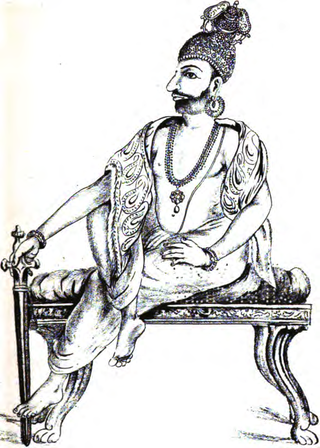
- July 7 – Marthanda Varma, Rani of Attingal (b. 1706)
- July 15 – Ambrosius Stub, Danish poet (b. 1705)
- July 18 – Duncan Campbell, Scottish soldier
- August 2 – George Booth, 2nd Earl of Warrington, English noble (b. 1675)
- August 15 – Pierre Bouguer, French mathematician (b. 1698)
- August 17 – Stepan Fyodorovich Apraksin, Russian soldier (b. 1702)
- August 23 – Ulrika Eleonora von Düben, Swedish lady in waiting (b. 1722)
- August 27 – Barbara of Portugal, Princess of Portugal and Queen of Spain (b. 1711)
- September 5 – Dmitry Ivanovich Vinogradov, Russian chemist (b. c. 1720)
- September 15 – Adina Beg Khan, Nawab of Punjab (b. 1710)
- September 23 – John FitzPatrick, 1st Earl of Upper Ossory (b. 1719)
- October 2 (bur.) – Philip Southcote, English landscape gardener (b. 1698)
- October 12 – Richard Molesworth, 3rd Viscount Molesworth, British field marshal (b. 1680)

- October 14
- Wilhelmine of Prussia, Margravine of Brandenburg-Bayreuth, daughter of Friedrich Wilhelm I of Prussia (b. 1709)
- James Francis Edward Keith, Scottish soldier and Prussian field marshal (b. 1696)
- October 20 – Charles Spencer, 3rd Duke of Marlborough, British politician (b. 1706)
- October 25/8 – Theophilus Cibber, English actor (b. 1703)
- November 5 – Hans Egede, Norwegian Lutheran missionary (b. 1686)
- November 12 – John Cockburn, Scottish politician (b. c. 1679)
- November 20 – Johan Helmich Roman, Swedish composer (b. 1694)
- November 22 – Richard Edgcumbe, 1st Baron Edgcumbe, English politician (b. 1680)
- November 27 – Senesino, Italian singer (b. 1686)
- December 5 – Johann Friedrich Fasch, German composer (b. 1688)

- December 12 – Françoise de Graffigny, French lettrist (b. 1695)
- December 16 – Andrzej Stanisław Załuski, Polish-Lithuanian bishop (b. 1695)
- December 17 – Charles Butler, 1st Earl of Arran, Anglo-Irish noble (b. 1671)
- December 25 – James Hervey, English clergyman, writer (b. 1714)
- December 26 – François Joseph Lagrange-Chancel, French dramatist, satirist (b. 1677)
- François Mackandal, Haitian revolutionary leader, burned at the stake (b. c. 1730)
- Nathaniel Meserve, American shipwright (b. 1704)
- Hyder Ali and his Sepoy capture Bangalore from "Khande Rao of the Maratha Confederacy". (Part of the Seven Years' War).
- Verónica II Guterres, African monarch
1759
- January 12 – Anne, Princess Royal and Princess of Orange, regent of Friesland (b. 1709)
- February 9 – Louise Henriette of Bourbon, Duchess of Orléans, mother of Philippe Égalité (b. 1726)
- February 20 – Georg Anton Urlaub, German painter (b. 1713)
- February 27 – Jacob Theodor Klein, German scholar (b. 1685)
- March 11 – John Forbes, British general (b. 1707)
- April 6 – Johann Gottfried Zinn, German anatomist, botanist (b. 1727)

- April 14 – George Frideric Handel, German composer (b. 1685)
- May 12 – Lambert-Sigisbert Adam, French sculptor (b. 1700)
- May 23 – Landgravine Eleonore of Hesse-Rotenburg, Countess (b. 1712)
- June 3 – Didier Diderot, French craftsman (b. 1685)
- June 20 – Margareta Capsia, Finnish artist (b. 1682)
- June 27 – Jacques Claude Marie Vincent de Gournay, French economist (b. 1712)
- July 6 – William Pepperrell, English colonial soldier (b. 1696)
- July 27 – Pierre Louis Moreau de Maupertuis, French mathematician (b. 1698)
- August 8 – Carl Heinrich Graun, German composer (b. 1704)
- August 10 – King Ferdinand VI of Spain (b. 1713)
- August 16 – Eugene Aram, English philologist and murderer, hanged (b. 1704)
- August 24 – Ewald Christian von Kleist, German poet (b. 1715)
- September 10 – Ferdinand Konščak, Croatian explorer (b. 1703)
- September 13 – James Wolfe, British general (b. 1727)
- September 14 – Louis-Joseph de Montcalm, French general (b. 1712)
- September 16 – Nicolas Antoine Boulanger, French philosopher (b. 1722)
- October 10 – Granville Elliott, Army General, British military expert, working for Britain and Palatine forces (b. 1713)
- October 27 – Konstancja Czartoryska, Polish noblewoman politician (b. 1700)
- November 14 – Grégoire Orlyk, Ukrainian-born French Lieutenant General (b. 1702)
- November 29 – Nicolaus I Bernoulli, Swiss mathematician (b. 1687)
- December 6 – Princess Louise-Élisabeth of France, daughter of King Louis XV (b. 1727)
- date unknown
- Alberto Pullicino, Maltese painter (b. 1719)
- King Thipchang of the Realm of Lampang (b. c. 1675)
Remove ads
References
Wikiwand - on
Seamless Wikipedia browsing. On steroids.
Remove ads
